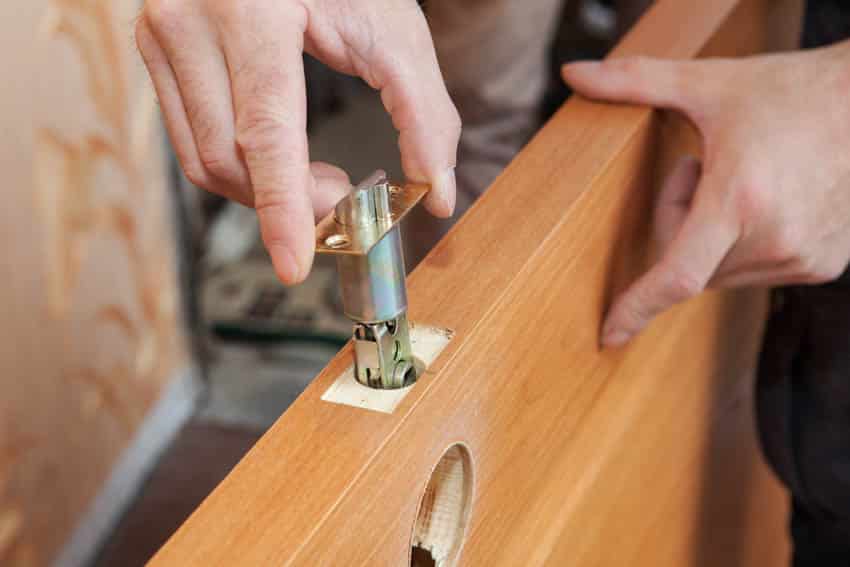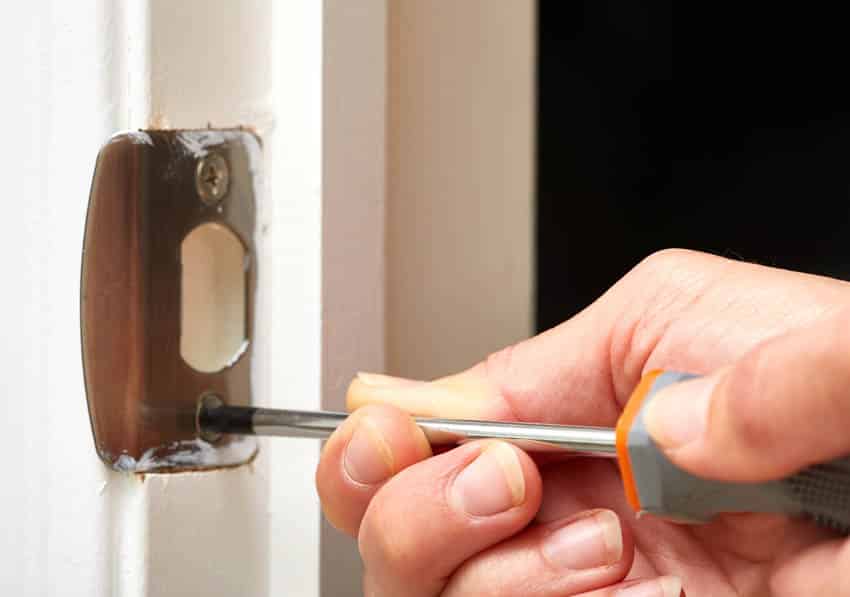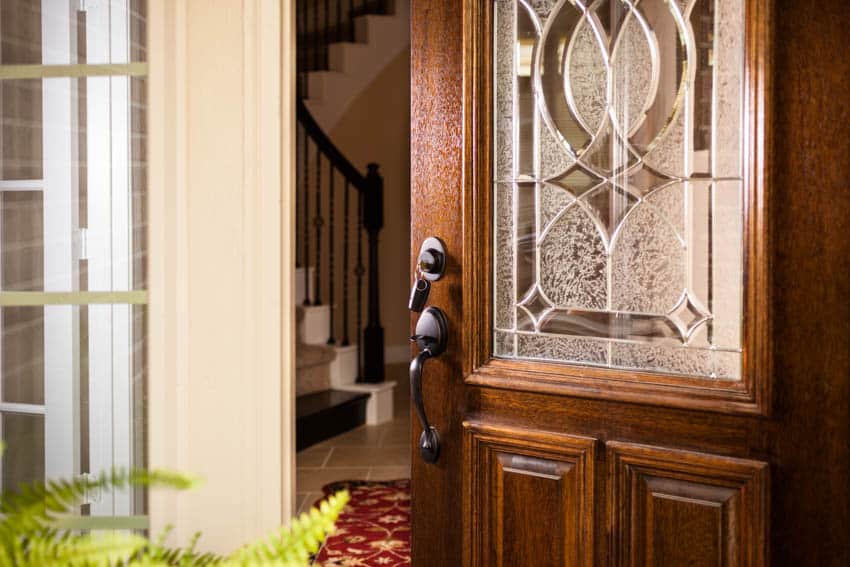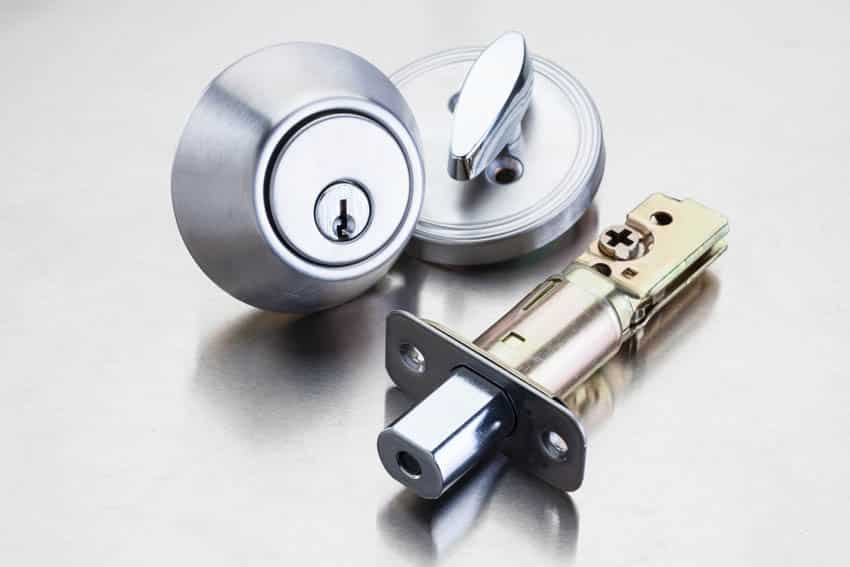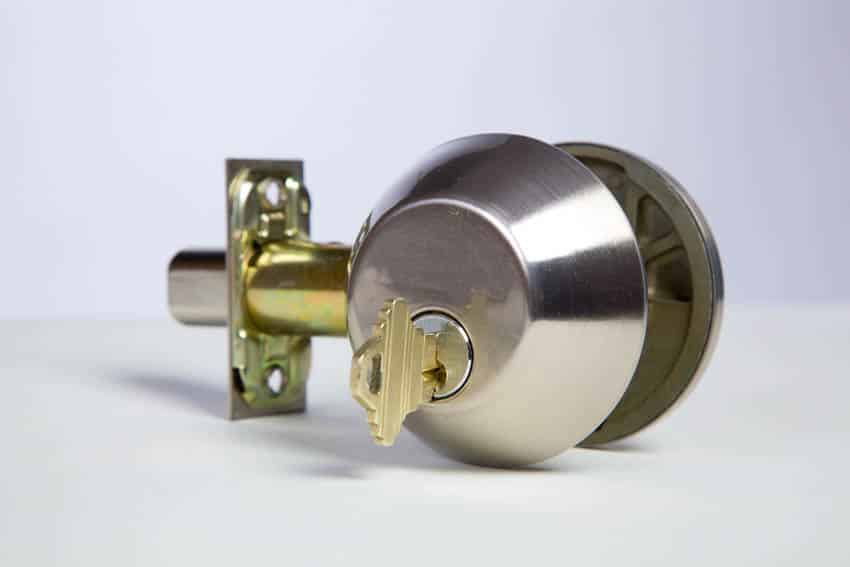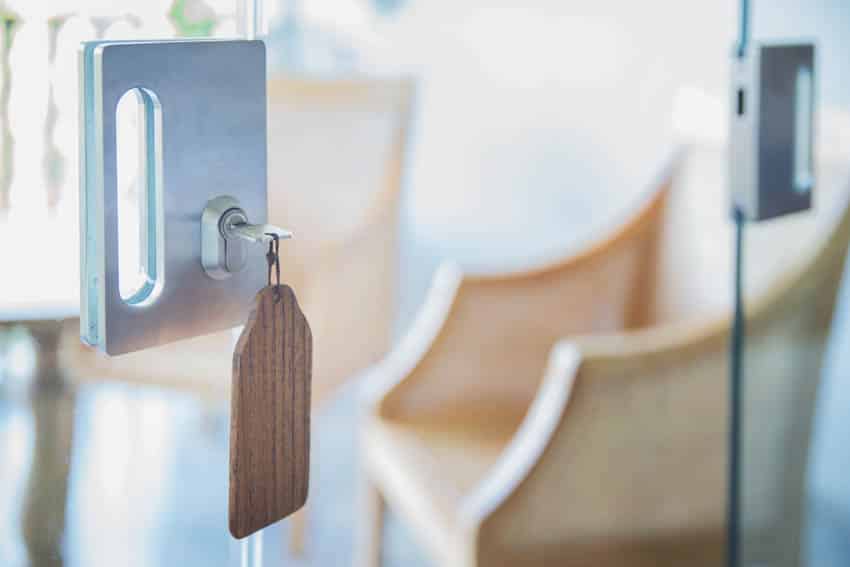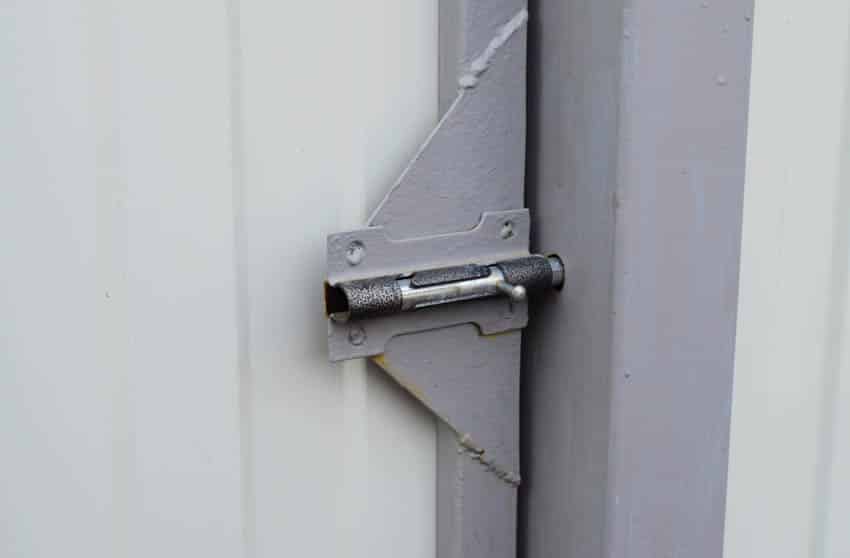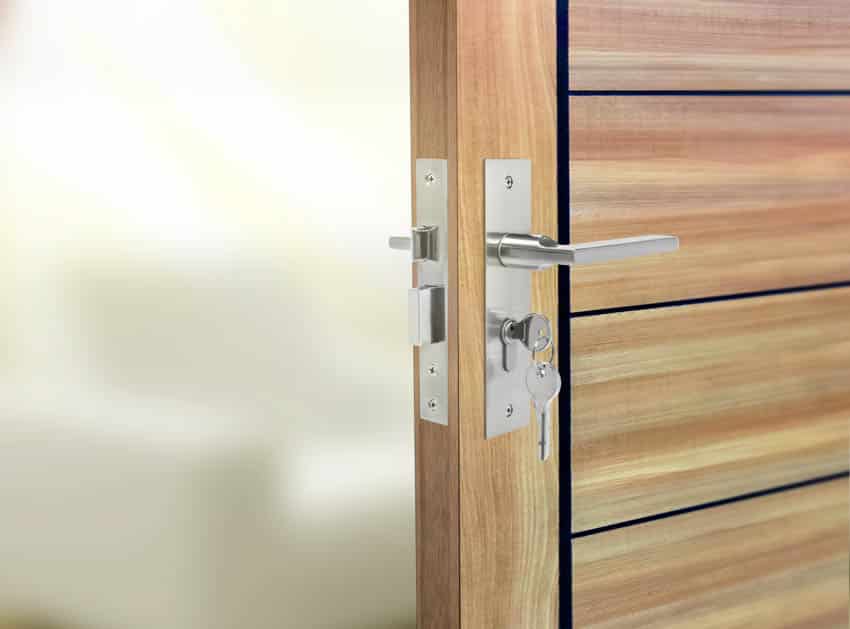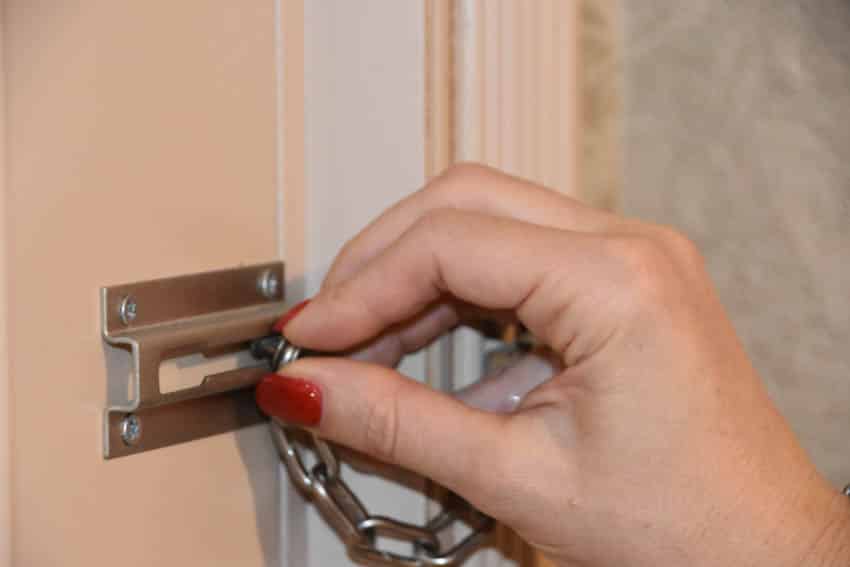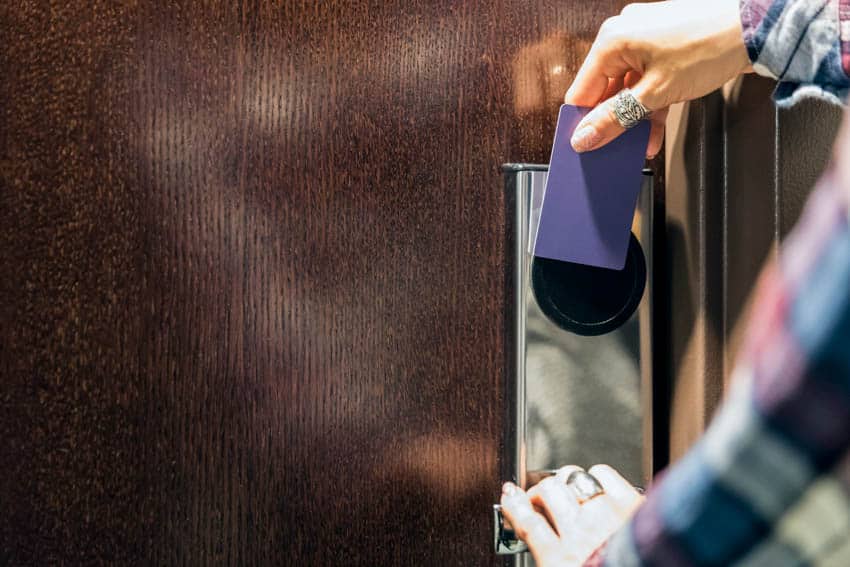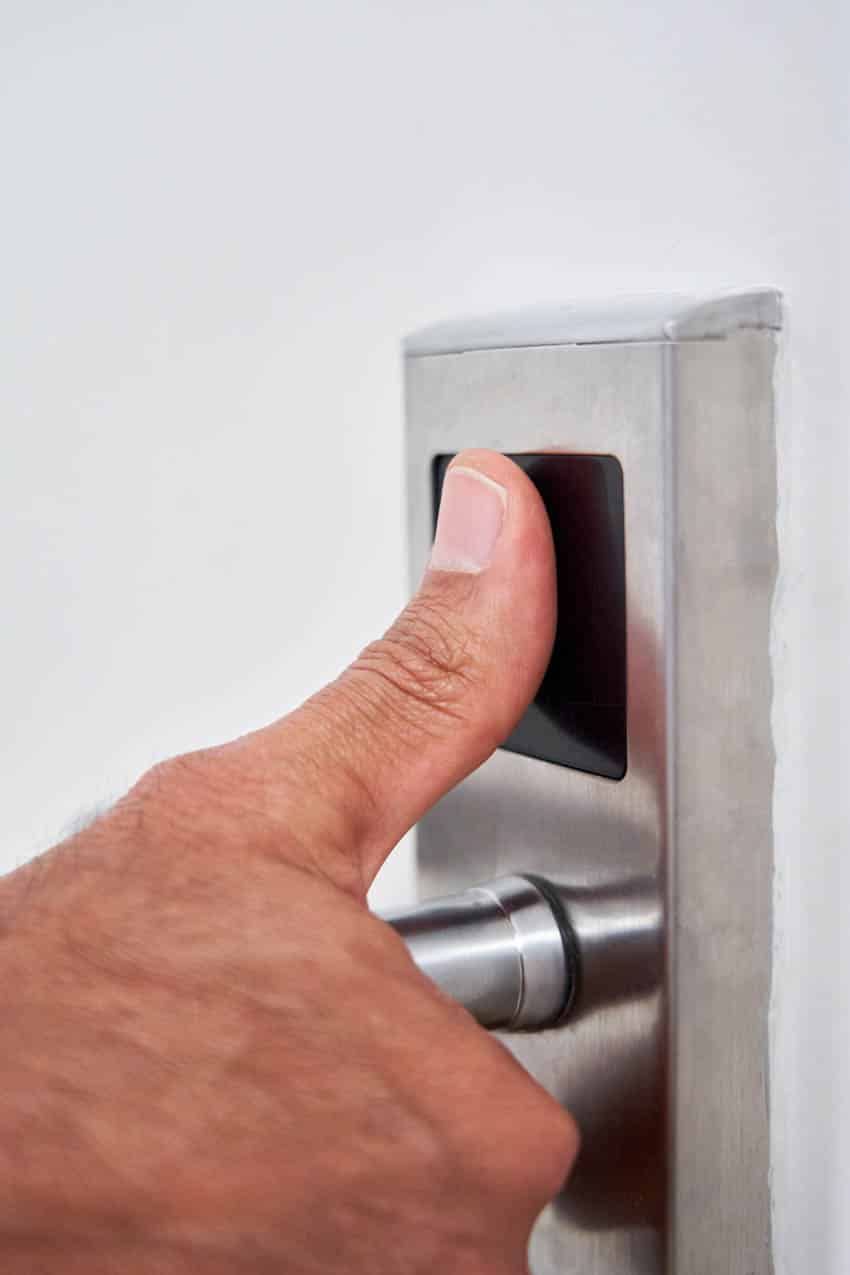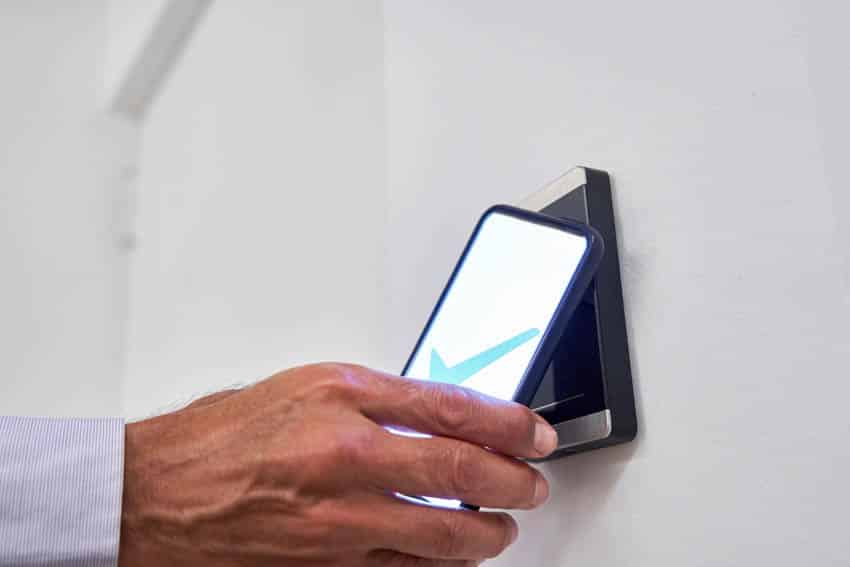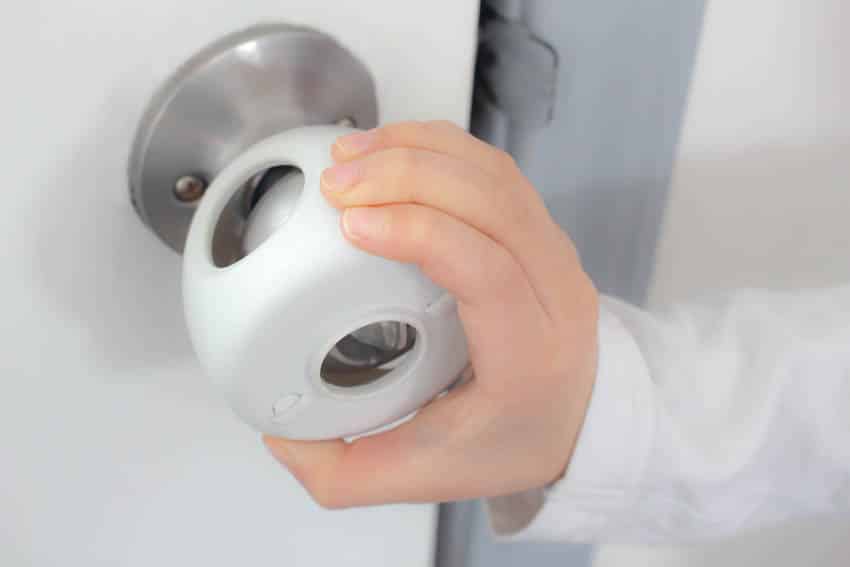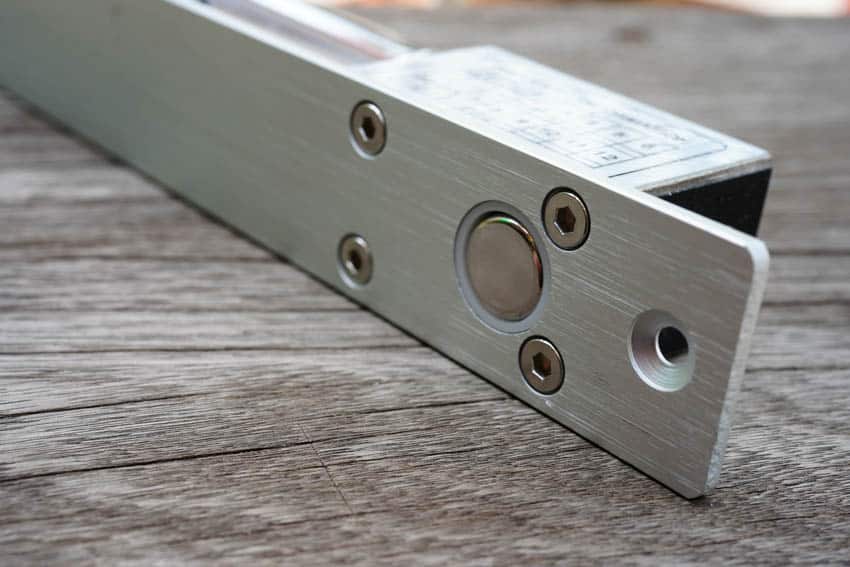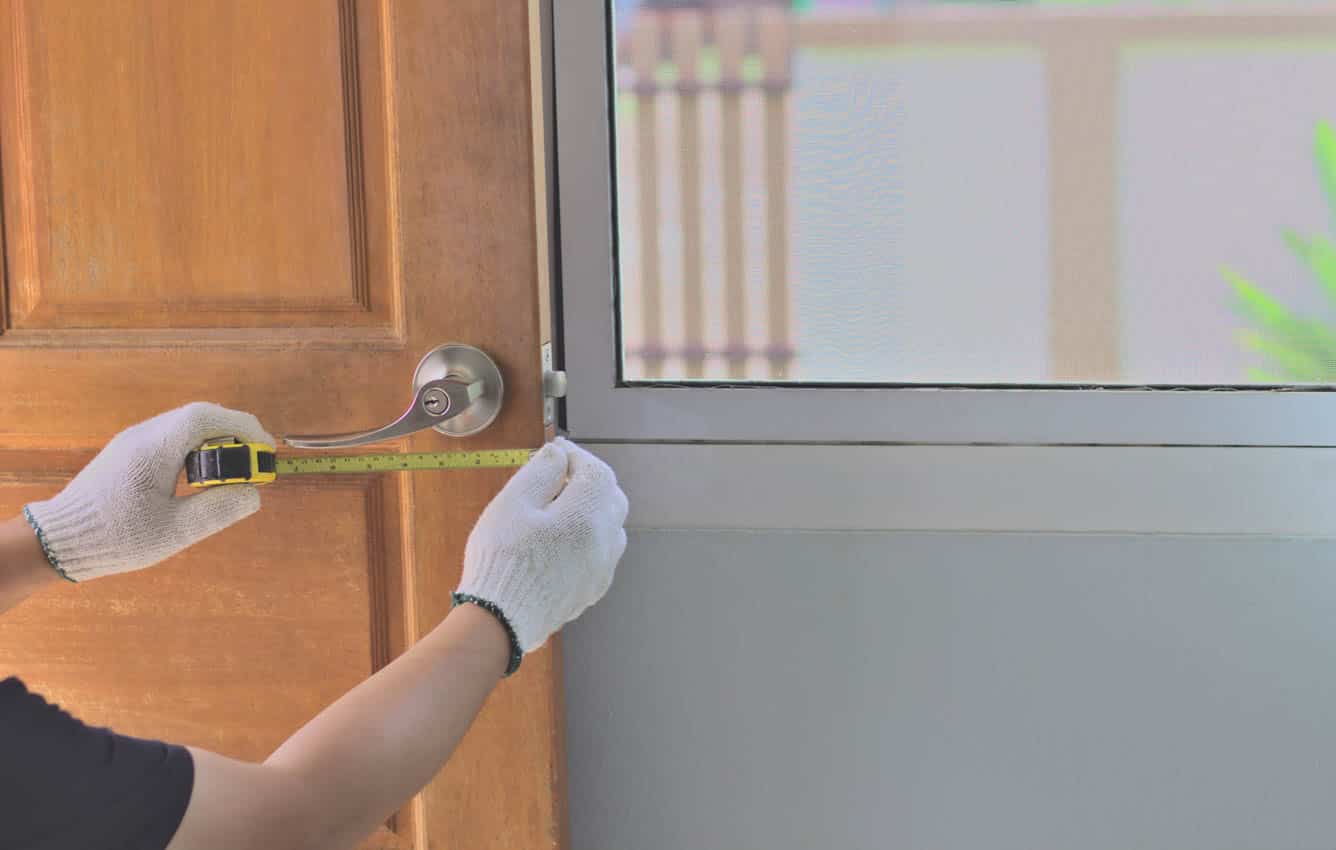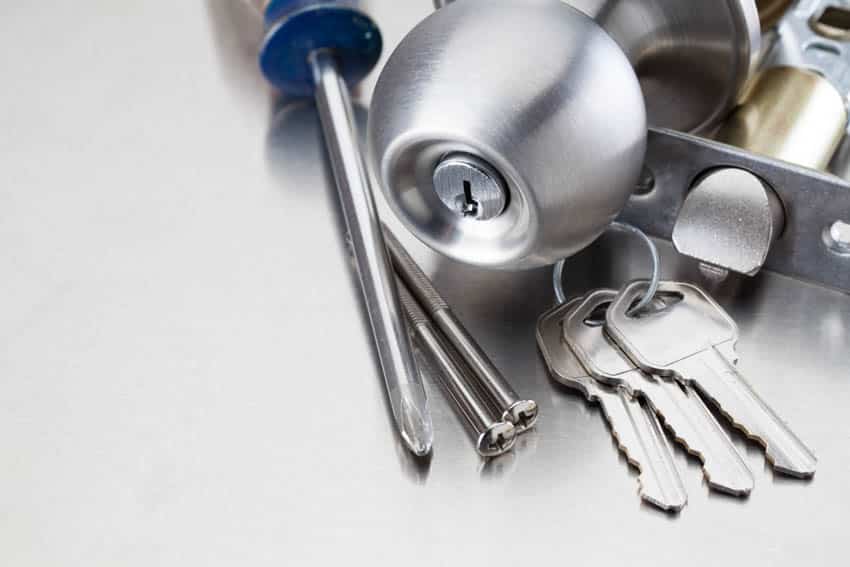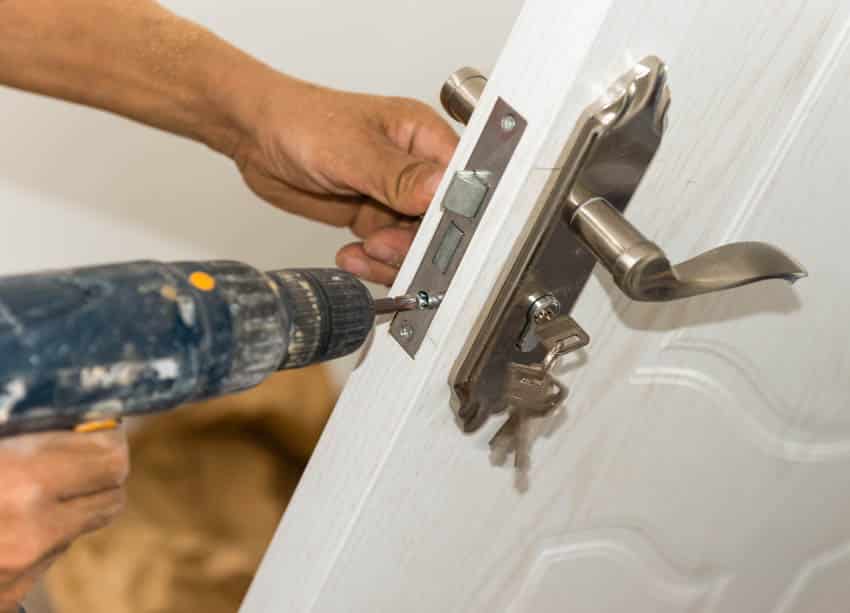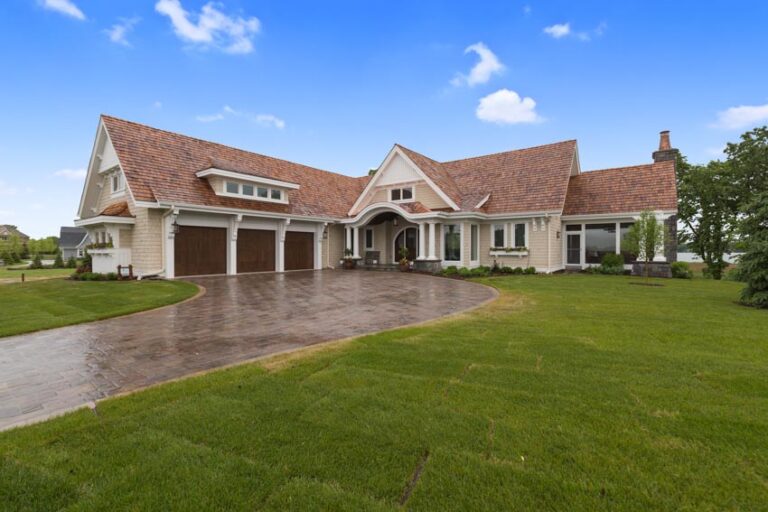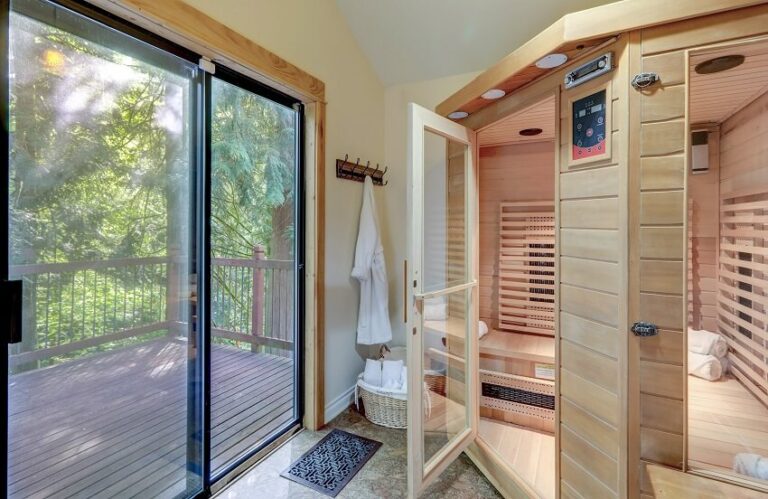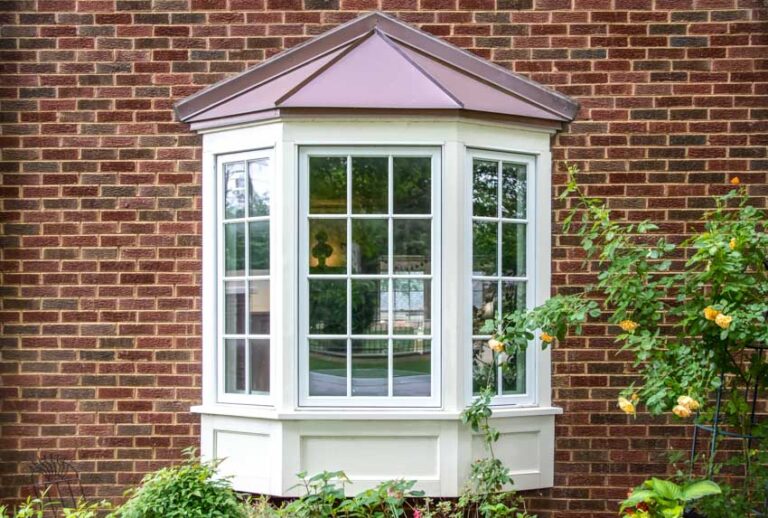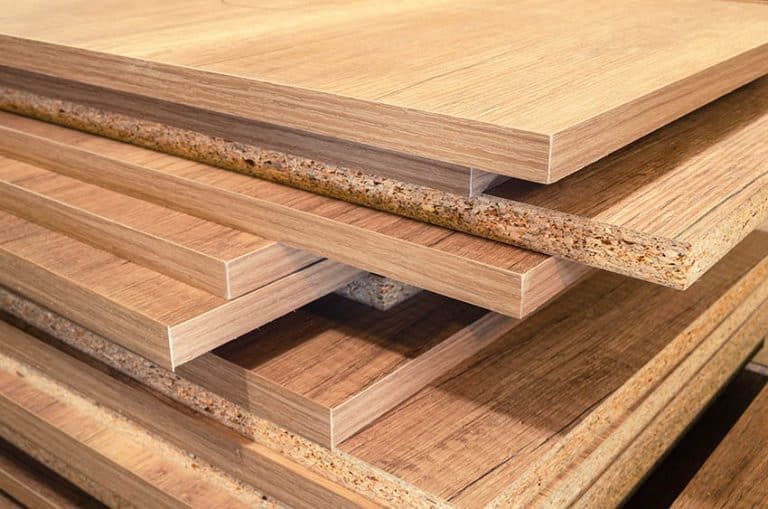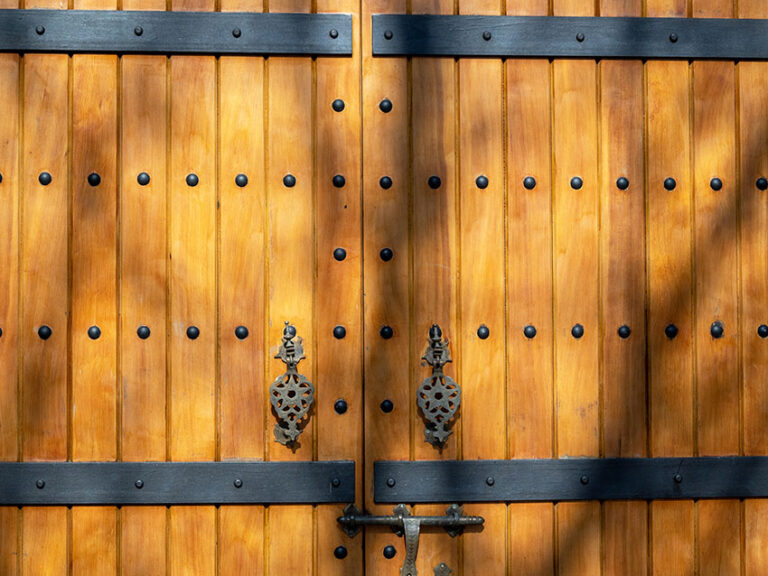15 Types Of Door Locks (Ultimate Buying Guide)

Choosing a lock for your door doesn’t have to be a difficult task. As a matter of fact, there are many options available and you should have no problem finding the exact type needed for the specific doors in your home. Below we’ll cover the types of door locks to consider, including their major parts, different mechanisms, and how to measure for a door knob lock.
Lock Parts for Doors
It’s not uncommon to replace your door locks from time to time. It would help out a lot if you know the names of their individual parts, how they contribute to the overall mechanism of the lock, as well as how they help out the other moving parts of the lock to ultimately lock up the door.
The looks and functions of door lock parts may vary depending on the type of door lock you actually have. However, in general, these are the standard parts of typical door locks that you ought to be aware of as they are what’s commonly available in the market.
Cylinder
This is also considered as the keyhole or the part where you slide in the actual key to the lock. In order for you to be able to open up a lock, the key you slide into the cylinder must fit into it perfectly. A misshapen or slightly deformed key will mean that it won’t fit perfectly into the cylinder, causing it to not open up the lock for you.
How the cylinder works is that it technically contains a series of pins that are spring-loaded and they move accordingly aside the moment that you stick the key inside it. If the correct key is inserted, the pins will move along with it as you push it further into the cylinder, which will eventually lead to getting the lock unlocked.
There are instances wherein you may go ahead and replace a damaged cylinder. This is a great option to go for especially if the door lock is particularly expensive and you’re trying to work on a budget.
But more often than not, if you just have a regular lock, it’s really more cost-efficient to just go ahead and replace the entire lock altogether.
There are 2 types of cylinders: single and double cylinder. A single-cylinder lock has space for one key on one of its sides and on the other, a twist knob that locks the door up from the inside. The key side is usually on the outside part of the door.
A double cylinder lock requires a key on either side and it doesn’t have a twist knob to lock up from the inside.
If you want a type of door where nobody can lock up from either side without a key, then this is a suitable lock option. This is commonly seen in public restrooms and other commercial spaces. Read more about our guide on French door sizes here.
Bolt Box
A bolt box or a latch box is the part of the lock that’s being moved or engaged the moment that the pins inside the cylinder of the lock move once the key has been inserted. This is the part of the lock that has a “tongue” that moves in and out of the main door frame when the door is lock, effectively keeping the door locked shut and keeping it in place.
There are 2 main types of bolts commonly available: the spring bold and the dead bolt.
Spring Bolt: These bolts are comprised of small clips that help keep them in place when locked. When the key activates the pins to move, this causes that clip to compress, which will then unlock the bolt, letting it move out of the door frame and back into the lock, effectively opening the lock.
The reason why this is called a spring bolt is because a spring is released, which moves the bolt back in place to keep the door closed again immediately after opening it.
This type of lock will lock the door on its own the moment that you close the door. This is commonly seen in hotel room doors.
Dead Bolt: A dead bolt lock, on the other hand, is a little more manual as the locking and unlocking function is something that you would have to do yourself. They’re considered to be the far sturdier and more reliable options compared to the spring bolts. This is why this proves to still be the favorite among home and office locks.
Strike Plate
The strike plate is the small metal frame that attaches to the door frame and helps keep it in place when the door is locked. This is typically screwed to the actual frame of the door and keeps that said door in position once locked. This is the easiest part of the lock to replace and normally, this is also the most common part of the lock that gets damaged.
Within the strike plate is the box which is the hole where the bolt is latched onto when the lock is locked. Most of the bolts available in the market right now are quite similar in size so it’s safe to say that most of the commercially manufactured boxes will fit most bolts inside them.
Different Types Of Locks
Door locks are varied and they all have special functions or purposes. Some locks are best suited for the outside of the home because they provide more security against intruders whereas other locks are better suited for the inside of the home, such as the bathrooms, bedrooms, and closets. They provide enough security to keep access from other people but not to the level of security of keeping intruders, who may cause harm, out.
Here are the different types of door locks you ought to get acquainted with and what their specific features are.
Door Knob Locks
Door knob locks are the most common type of locks that can be seen in most homes. They’re specifically used on doors for the rooms inside the home such as the bathrooms and bedrooms.
They’re also commonly found on the front doors or other exterior doors of the home, but just that they’re paired alongside a deadbolt lock or some other more secure lock to keep intruders out.
These types of door locks have the locking mechanism embedded within the knob itself and they have knobs on both sides of the door. These door knobs can have single or double cylinder locks, depending on whether you want the door to only be locked from the outside in or both ways.
Handlesets
Handleset locks are notable for having a handle on the external side of the door. They can come with a key opening or with a twist knob on the inside of the door, allowing you to lock the door from there.
Among the different types of door locks, this one is known to be quite secure as it features a deadbolt lock as opposed to a spring bolt. This is because it’s built with security in mind first and foremost.
This is also why handle set locks are common for external or front doors in the home. They can also be quite aesthetic so they pair up well with the decor of a front door.
Deadbolt Locks
Deadbolts are usually added as a separate entity on top of the door knob. A lot of the homeowners out there prefer to equip their front doors with deadbolt locks just to get that added layer of security. This helps lessen the risk of having intruders around as they can be quite difficult to get into once locked from the inside.
It’s an extremely secure lock system that makes it almost impossible for a burglar or an intruder to get through the door. They can come in single or double cylinder options.
Double Cylinder Locks
As expected, the double cylinder deadbolts offer maximum security compared to the single-cylinder type. If you want to really secure your front door, it would be best to go with a door type that’s particularly sturdy and isn’t that easy to break down.
Hand Levers
Hand lever locks are excellent for inside doors in the home. They can also be commonly found in basement doors and closets. True to their name, they’re equipped with levers on one side of the door, preferably on its external side, and a twist knob on the side that’s usually on the inside.
Hand levers don’t really provide the same level of security and safety compared to the other locks so they’re not ideal candidates for the front door. But they do have the ergonomic advantage of allowing you to open them with just one hand, which can be convenient if you happen to have kids, groceries, and other things in tow while you’re trying to enter a specific room.
Locks for Sliding Doors
Sliding doors are often regarded as one of the least secure entry points in any home. This is true, especially those made of glass. To ensure protection, these doors are installed with locks to prevent unwanted individuals from entering.
In most cases, a standard rim latch is attached to the sliding glass door while a strike plate is found on the other end. When these components meet, the locking mechanism can be engaged.
Barrel Bolt
A barrel bolt is also nicknamed a sliding bolt lock. It’s installed from the inside part of the door and is also known to be a precautionary lock to maximize your safety from within the home or the room in which you’re installing it.
The lock is comprised of two pieces: one that’s attached to the actual door, and the other that’s attached to the door frame. The main assembly part of the lock is attached to the body of the door and it has a cylinder that you can slide in or out, to lock or unlock it.
It’s a pretty simple mechanism with tremendous safety benefits and a lot of people have opted to have them added as an extra lock on top of the other locks that they may have installed on the door.
Mortise Lock
A mortise lock is similar to a hand lever lock-in design but it refers specifically to a type of lock that has a pocket that’s been cut into the wood of the actual door where the lock is then fitted. They can be seen on newer doors and installing them would require special preparations.
A mortise lock would usually have 4 parts: the actual lock body installed within the door, the lock trim on the handle, the strike plate that’s affixed to the door jamb, and the key to lock or unlock the body.
Chain Locks
Chain locks are typically seen on the inside of hotel room doors. They have a piece that serves as a catch on the door frame and another piece, which is its main assembly, connected to the actual door. It’s quite similar to how a barrel bolt works but it’s just that instead of a barrel, it has a chain with a catch to lock the door.
The idea of this particular type of lock is that it allows you to open the door up ever so slightly to see who’s at the door or to greet someone without necessarily giving them access to the inside.
So technically, the door can still be considered closed. A person will not be able to enter the door without you releasing the chain.
Cam Locks
Cam locks are locks that are commonly found in filing cabinets, safes, and closets. They’re among the simplified types of door locks out there.
How they work is that a key is required in order for you to turn the cam, which will lock or unlock whatever it is you’re securing. These locks can come in tubular or flat varieties. Read more about our guide on doing a closet makeover on a budget here.
Keyless Locks
Keyless door locks, as the name suggests, allow you to lock and unlock a door without ever having a need for a physical key. These locks offer convenience and flexibility that go beyond what traditional door locks can offer. They take away the hassle of ever having the need to carry keys around.
They are usually a little more technologically advanced compared to the other looks and may require facial recognition, fingerprint, fobs, or a code combination. Here are the most common types of keyless door locks available.
Fingerprint Lock
Fingerprint door locks are also nicknamed biometric door locks. They use something that’s unique to the owner instead of a traditional key: the fingerprint.
They’re typically equipped with optical or thermal scanners to store the fingerprints of anybody who’s authorized to unlock the door. As an added layer of security, once you’ve been authorized, a PIN is also required before you can gain entry.
Smart Lock
A smart door lock is another type of keyless door lock that includes the use of a smartphone. This is even more convenient and is even common to some Air BnBs and vacation homes wherein the owners would sometimes allow guests to come in even in their absence.
How they work is that the owner can usually grant access to a third party or an outsider by giving them a virtual key. This is usually sent out over SMS or via email. Once the key has been received, the recipient will be able to encode that into the door lock within the owner’s specified timeframe.
Child-Proof Locks
Technically speaking, any type of lock that can be higher than the actual door handle or knob can be considered child proof for as long as it’s installed high enough, far from the reach of small children.
This will require a bit more dexterity and difficulty that only adults can deliver, barring small children from being able to lock or unlock a door when they’re not supposed to.
Multi-Point Locks
A multi-point door lock is a type of lock that locks at different points in the door, as the name suggests. The typical configuration is top, middle, and bottom. It’s basically a combination of 3 deadbolt locks that are all interconnected in one locking mechanism. They’re mainly used on composite and uPVC doors.
They’re more expensive compared to a typical deadbolt lock but they do provide added security. They’re also recommended for bigger doors because since they cover a bigger area compared to just one lock, they can prevent the door from warping.
For most homeowners, they are definitely worth the additional expense. That’s because, among the various types of door locks, this one provides an extra layer of security.
Magnetic Lock
A magnetic door lock employs magnetic force to stop the door from opening. It’s considered one of the most secure types of door locks available as they are rarely hacked or broken into. Once opened, they allow for easy access which is why this is commonly found in offices and other commercial spaces.
Because it uses electric current to strengthen the lock, the doors are able to withstand pressure, effectively barring access to anyone unless they are authorized or confirmed. The common rule of thumb is that the more expensive the magnetic door lock is, the stronger it typically is.
How To Measure For A Knob Lock
Getting a door knob installed may sound like a pretty simple task but what you need to know is that you need to be precise with your measurements for the knob to actually work. On top of finding out what your door’s thickness is, you also need to look out for other information such as the circumference of the hole on the door for the knob to be set in place as well as how far it is from the actual door frame.
You need to start measuring the following:
The door’s thickness: Older doors are typically thin whereas newer doors are thicker. Make sure you double check your measurements as this is very important.
Bore holes on the door: There are two bore holes you need to measure. The first one is the cross bore which is the hole that is on both sides of the door. Measure out both the diameter and the depth. The second bore is the latch bore which is on the edge of the door.
Once you have these exact measurements, it’ll be pretty easy to figure out which door locks you’re supposed to go with and you’re guaranteed that they’ll fit right in with no issues.
Are Locks for Doors a Standard Size?
The short answer is yes. As an industry standard, most door locks are standardized at a measurement of 2-1/8”. There will be instances wherein this might not fit into your actual bore holes for your door. If this is the case, you have 2 options. You can either re-drill your bore holes or you can go with lock companies that make locks that can fit into smaller bore holes.
What Is The Distance Between The Deadbolt And Knob?
As a standard measurement, there needs to be a minimum distance of 5.5 inches coming from the center of the crossbore hole of the deadbolt to the center of the other door latch that’s attached to the main frame of the door.
Installing a deadbolt lock on top of having the lock that’s included with the door knob is common practice as it provides extra security. This is common for front doors in most homes.
Although installing a deadbolt to your door is something easy to do and can be done as a DIY project in the home, you need to make sure that you get to pay attention to specific measurements.
Otherwise, this could result in misalignment or the deadbolt lock not properly functioning, which would defeat the whole idea of getting it installed in the first place.
What Size Hole Is A Deadbolt?
Most industry-standard deadbolt locks require a 2 1/8 inch hole for the lock body. As for the sliding bolt assembly where the screws are installed, it requires a 1-inch spade bit. Make sure to mark the areas for drilling with a pencil for added accuracy.
Most deadbolt locks are standard-sized but just as an extra precaution, make sure that you read up on the instructions and measure the assembly of the actual lock in order for you to select the correct hole before you drill. See more related content in our article about how to measure a door on this page.


